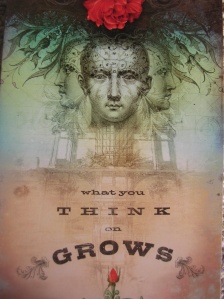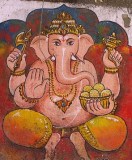Several weeks ago, I had one of those conversations with my brother – you know those conversations in which you feel entirely alive and inspired, one idea leading to the next, spinning off of each other into a beautiful new place you couldn’t have gotten to on your own. It is one of the reasons I moved to Austin – the chance to have more of those conversations with him. Proximity is often necessary to make those exchanges happen, like late-night dorm conversations.
I have continued to reflect on one concept we discussed that was informing Ian’s latest piece, which was the relative strength of different methods to “get things done.” One method is the NASA model, as Ian called it. You establish a clear goal, the “mission,” and then commit to it. No need to identify at the outset the steps it will take to get there. The commitment to the end point is what matters; the details work themselves out. NASA decided they would put a man on the moon and then spent the next ten years figuring out how to do it. There obviously was no precedent for such an accomplishment, no road map for how to get there, but after choosing their mission, it was simply a matter of taking one step after the next until the mission was accomplished. The method is all about the end point, not the process.
This brought to mind a phenomenon explained by my teacher Claudia Welch: “Wherever your attention goes, prana follows. And where prana goes, your cells follow.” By focusing our mind’s attention, we create a flow of prana or life energy in a certain direction. Our intention is manifested on this subtle level first, the most powerful force we can marshal. In time, the path established by prana materializes physically, even in physical tissue. If our attention is perpetually focused on a pending disaster at work, and consequently our breath is shallow and prana is restricted, the muscle cells in our shoulders (or stomach, or neck…) will follow suit and form knots.
It occurred to me that this is the same phenomenon revealed by the NASA model. The NASA engineer starts every day envisioning a man walking on the moon. While she may not know what it’s going to take to get there, she focuses her attention on that reality. That vision is alive in every moment of her day. What’s even more powerful is the shared vision, the fact that thousands of NASA employees woke up every morning for ten years and stepped into that vision, concretely directing their prana towards that future. Where attention went, prana followed, until those intentions crystalized in a man standing on the moon.
The prize-winning question then becomes, how do we control what we pay attention to? There are countless things vying for our attention these days – pending deadlines, the needs of family members, long to-do lists, endless advertisements – indeed, entire professions are built around how to hold the “consumer’s” attention. A New York Times article I read recently described decision fatigue, a unique malady of our modern choice-filled culture. From the rows of tantalizing items at the checkout counter, to the multiple holiday-season invitations, to the tempting “two for one” offers…. Deciding takes work. It requires weighing factors, comparing and contrasting, revisiting original intentions, consulting budgets and time commitments, and then landing on one side or the other – over and over again in a single day! Each act of consideration fatigues us just a bit more. It’s no wonder we’re tired at the end of the day. It is a war of attrition to direct our own attention rather than live at the mercy of the myriad attractions moving around us.
So how do we keep control of our attention stream? How do we keep the conversations that feed and inspire us alive? It takes more than will power, or even good company – it takes strategy.
One thing I so valued at Vaidyagrama was having enough uncluttered mental space to examine an idea from multiple viewpoints, to allow it to simmer in the back of my mind until it was adequately cooked and rose to the surface again. To do so requires maintaining contact with an idea over a span of time in which you can consider it, put it aside, and pick it up again later when something reminds you of it from a new angle. My life before India never allowed for the “luxury” of such contemplation, and in India I realized its immense value – its necessity even, considering where I want to go, what I want my life to be about.
So I’ve been thinking, how do people do it? How are those creative, powerful, accomplished people keeping themselves focused on the important issues in life? My brother funnels his focus into his art. His highly-conceptualized pieces are a visual reflection of ideas he actively and intentionally percolates while he draws in his windowless studio. One way I am working with my attention is to set aside a regularly scheduled time for contemplation of the Big Pictures in my life. One can contemplate in meditation, or through journaling, or while doing a “mindless” activity like knitting. For me, writing is it – in fact, writing with YOU in mind. Preparing (or paring) my thoughts for a reader forces the digestion of ideas in a way that journaling doesn’t.
The missing key, which I have been discovering over the last few (post-less) weeks, is the regularity of the Big Picture contemplation, the non-negotiableness of its place in my schedule. It needs to be a firm part of my week for which I stop other activities, not something I do when I “find” the time – time is too easy to lose. If I wish it to serve the function of keeping my north star in sight, writing must be a regular part of my practice. And I expect you will see the evidence of this new regularity right here!
So I’m wondering, how do you keep focused on the important things in your life? What is your strategy?



































